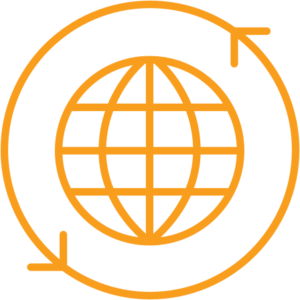THE DUTCH RELIEF ALLIANCE
Project phase: Pilot Phase
Thematic Area: Cash Programming
Summary: Financial technologies to enable pre-disaster Cash Transfer Program to save lives, increase preparedness and mitigate disaster risks. The project was implemented over a period of 27 months in the municipality of Salcedo in Eastern Samar province in the Philippines. It supported almost 2,000 vulnerable households to better prepare for disasters by having access to forecast information and digital financial services such as pre-disaster fund, savings, and insurance. The project was Resilience and preparedness are the first line of defense for vulnerable communities in disaster prone areas. Adequate disaster preparedness is key to increasing communities and minimizing the risk posed to their lives and livelihood.
B-READY project aims to better protect vulnerable households from natural disasters by combining innovations in impact-based weather forecasting and financial technologies designed to save lives, increasing preparedness, and mitigating disaster risks through enabling pre-disaster cash transfers.
The project combines two (2) innovations on disaster preparedness to enhance community resilience using:
Early warning system through implemented by a consortium of partners from the government, local civil society organizations, science-based organizations, financial technology companies, and international non-government organizations
Elements of the project

Impoverished communities in disaster-prone areas are hit disproportionately hard by disasters through loss of life, suffering and economic fallback. Within these communities the most vulnerable groups, including women, children and disabled persons suffer the most severe consequences of disasters. Vulnerability is determined by poverty, the lack access to information (forecast), capacities and resources to minimize the impact of disasters. The third most disaster-prone country worldwide is the Philippines, especially the Salcedo municipality (see map) where the proposed intervention is to take place.
Investing in disaster risk reduction and preparedness yields multiple benefits (ISDR, UNOCHA), starting with saving lives, reducing infrastructure damage and minimizing economic losses. There is evidence that each Euro invested in disaster preparedness saves between four and seven Euros which would be spent in response to a disaster (EU, 2018). Unfortunately, although critically needed for regions like Salcedo, disaster preparedness is woefully underfunded.
At the same time, we have seen a rise in cash transfer programming (CTP) within the international humanitarian system over the last 10 years. There is recognition that CTP can be more efficient and effective than traditional in-kind assistance. However, delivering safe and timely CTP poses a significant challenge for governments, civil society organizations and financial institutions after a disaster hits. Financial service infrastructure is often damaged or lacking; disaster contingency plans often lack financial components; financial literacy and awareness of CTP is often low among local humanitarian actors. Although CTP can be far more effective at reducing human and financial cost of a disaster before the event, until now CTP has been used primarily reactively for recovery, rather than proactively for preparedness and resilience.

Where? Philippines, Municipality of Salcedo in Eastern Samar province, located in the country’s eastern corridor (Matarinao, Burak, Bagtong, Buabua, Butig, Palanas, Cagaut, Bua-bua and Palanas) which is most vulnerable to strong tropical cyclones that originate in the Pacific Ocean.
Who? Vulnerable groups, including women, children and disabled persons.
What? The B-READY project sought to enhance resilience and disaster preparedness of vulnerable communities.
Innovation proposed? The project put in place a preemptive CTP
Why? Vulnerable households globally, and in the Philippines, struggle to protect themselves from disasters. Vulnerability is determined by poverty, lack of information, and lack of resources: communities’ lack of disaster preparedness often stems from a lack of financial resources, governmental neglect and the inability to predict the impact of disasters.

Lorem ipsum dolor sit amet, consectetur adipiscing elit, sed do eiusmod tempor incididunt ut labore et dolore magna aliqua. Ut enim ad minim veniam, quis nostrud exercitation ullamco laboris nisi ut aliquip ex ea commodo consequat.
Humanitarian actors’ ability and capacity to reduce disaster impacts were strengthened by the inte-gration of impact-based forecasting models in disaster early action protocols that will enable the re-lease of financial support (grants/services) to the most vulnerable before a disaster strikes.
Local leadership is instrumental in safeguarding the rights of citizens and in promoting participation.
The pilot is not just a technical pilot to see how the use of data and triggers affect the resilience of vulnerable people; but about building roadmap towards a lasting collaboration between the two sectors as an additional way of operations for the humanitarian sector as well as the financial sector.

Vulnerable communities are better prepared to manage and cope the financial adverse impact of climate relates disasters.
By the end of the project period, key accomplishments of B-READY included the following:

The B-READY model has been adopted by the local government of Salcedo, East Samar, Philippines and issued a resolution to adopt the whole B-READY model as part of early warning, early action; more specifically, the use of digital forecast technology for 3 days release of cash grant for early action and protection.

“B-READY is piloted in Indonesia (under FCDO) and Sudan (under Sudan Joint Response) and is being scaled up in the Philippines. Furthermore, the partnership has applied for ECHO funding to continue the pilot in Indonesia and to expand to Bangladesh. Talks are ongoing to explore funding opportunities for Uganda as well.



POSITIVE
NEGATIVE

On Beneficiaries
On project design:
Stakeholders & Private sectors
On capacity building:
On the use of technology for preemptive CTP:
THE DUTCH RELIEF ALLIANCE
CARE Nederland (chair)
Parkstraat 19
2514 JD Den Haag
The Netherlands
E: office@dutchrelief.org